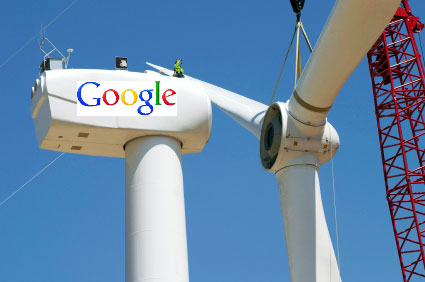From Facebook data centers to Tide laundry detergent, America’s favorite brands increasingly have one thing in common: a pledge to transition to 100 percent renewable energy, and they’re choosing wind as a low-risk, reliable solution.
A few years ago, Fortune 500 companies started making remarkable shifts in the way they powered their stores, factories and data centers — they took matters into their own hands and began directly buying renewable energy.
For example, Google expects to run 100 percent of its worldwide operations on renewable energy this year, and wind will provide 95 percent of that electricity. General Motors signed a pair of wind deals to buy enough wind power for 16 of its U.S. factories — including an Arlington, Texas, plant — where it churns out 125,000 trucks every year.
And just this past week the hardware giant Home Depot announced an agreement to buy enough electricity from a Texas wind farm to power 100 stores.
But why are they setting such ambitious goals?
Many companies of these companies have internal sustainability goals, and buying renewable energy helps them hit their targets. However, in business the bottom line almost always rules the day, and buying wind power is no exception. Wind’s low costs and long-term price stability offer attractive investment opportunities that Fortune 500’s want in their portfolios.
“This pursuit of renewable energy benefits our customers and communities through cleaner air while strengthening our business through lower and more stable energy costs,” said General Motors Chairwoman and CEO Mary Barra, speaking about her company’s 100 percent renewable energy goal.
Most corporate wind power purchase agreements happen in the middle of the country according to new AWEA analysis, stretching from Texas up through the Heartland and Rust Belt. Unsurprisingly, wind is usually the cheapest source of new electric generating capacity in this part of the U.S. That’s because wind’s costs fell by 66 percent over a six-year period, as technological advances allowed turbines to reach stronger, steadier winds at higher altitudes. Improved domestic manufacturing also cut supply chain costs.
Long-term price stability is just as important. When a company signs a PPA to buy wind power, it knows exactly what it will pay for electricity five, 10 or 15 years down the road. Businesses place a lot of value in reliability, which make long-term planning possible.
“Companies are investing in sustainability, not because they’re making a political statement,” said the president of Ceres recently, “but because they have a fiduciary duty to protect shareholders and make money.”
Perhaps the best news about this trend is that it has the side effect of bringing economic development to rural and Rust Belt America. The desire for renewable energy helps drive wind power growth, keeping the 500 U.S. factories that build wind turbines and parts for them forging ahead at full speed.
Over 99 percent of wind farms are built in rural areas, and they add substantial revenue to local community coffers. Wind farms are often the largest taxpayers in town, bringing new income that used to fix roads and improve schools. And farmers and ranchers receive $222 million every year in lease payments for hosting wind turbines, creating a new cash crop they can count on. For example, the Home Depot project alone will create $150,000 in local benefits each year.
We expect this trend to continue in the years ahead. Many companies have a long way to go to reach their 100 percent renewable energy goals, and wind can help them get there. It’s good for their bottom lines, long-term prospects and America’s economy. It’s simple — buying wind just makes sense.
Hannah Hunt is a senior analyst at the American Wind Energy Association.
morningconsult.com


